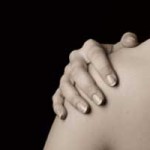Prevention is key Sports massage can play an important role in the life of any person, whether they are injured or not. Sports Massage is for everyone. For injury. For pampering. For deep relaxation.
The rotator cuff is a group of muscles which work together to provide the glenohumeral (shoulder) joint with dynamic stability, helping to control the joint during rotation (hence the name).
The rotator cuff muscles include:
- Supraspinatus
- Infraspinatus
- Teres Minor
- Subscapularis
Supraspinatus and Infraspinatus are the most commonly injured rotator cuff muscles. Due to the function of these muscles, sports which involve a lot of shoulder rotation – for example, bowling in cricket, pitching in baseball, swimming, kayaking – often put the rotator cuff muscles under a lot of stress.
Problems with the rotator cuff muscles can be classed into two categories – Tears of the tendons/muscles, and inflammation of the tendons (often called tendinopathy or tendonitis).
Acute Tear
This tends to happen as a result of a sudden, powerful movement. This might include falling over onto an outstretched hand at speed, making a sudden thrust with the paddle in kayaking, or following a powerful pitch/throw.
The symptoms will usually include:
- Sudden, tearing feeling in the shoulder, followed by severe pain through the arm
- Limited movement of the shoulder due to pain or muscle spasm
- Severe pain for a few days (due to bleeding and muscle spasm) which usually resolves quickly
- Specific tenderness ( “x marks the spot” ) over the point of rupture/tear
- If there is a severe tear, you will not be able to abduct your arm (raise it out to the side) without assistance
Chronic Tear
A chronic tear develops over a period of time. They usually occur at or near the tendon, as a result of the tendon rubbing against the overlying bone. This is usually associated with an impingement syndrome.
- Usually found on the dominant side
- More often an affliction of the 40+ age group
- Pain is worse at night, and can affect sleeping
- Gradual worsening of pain, eventually some weakness
- Eventually unable to abduct arm (lift out to the side) without assistance or do any activities with the arm above the head
- Some limitations of other movements depending on the tendon affected

